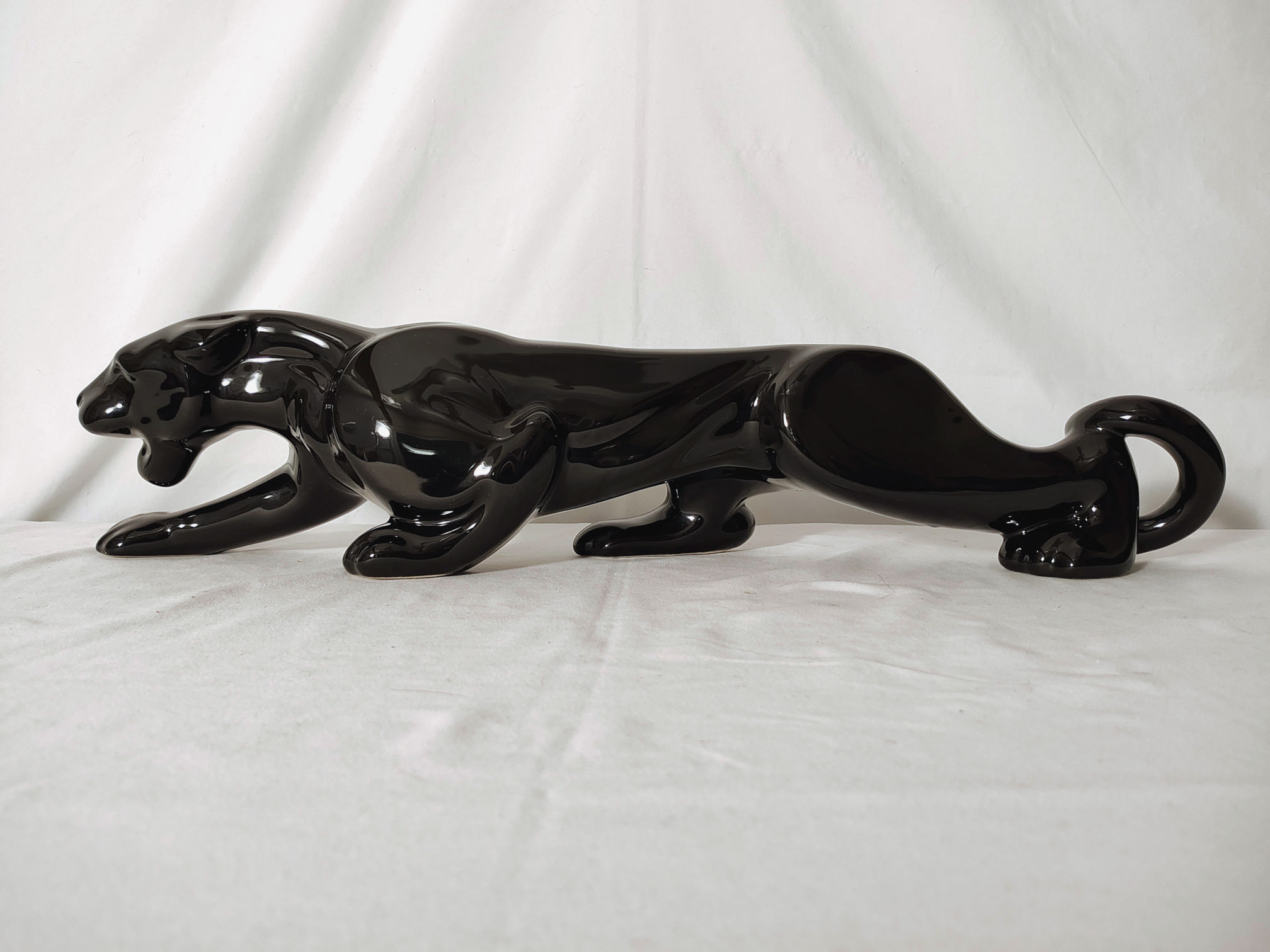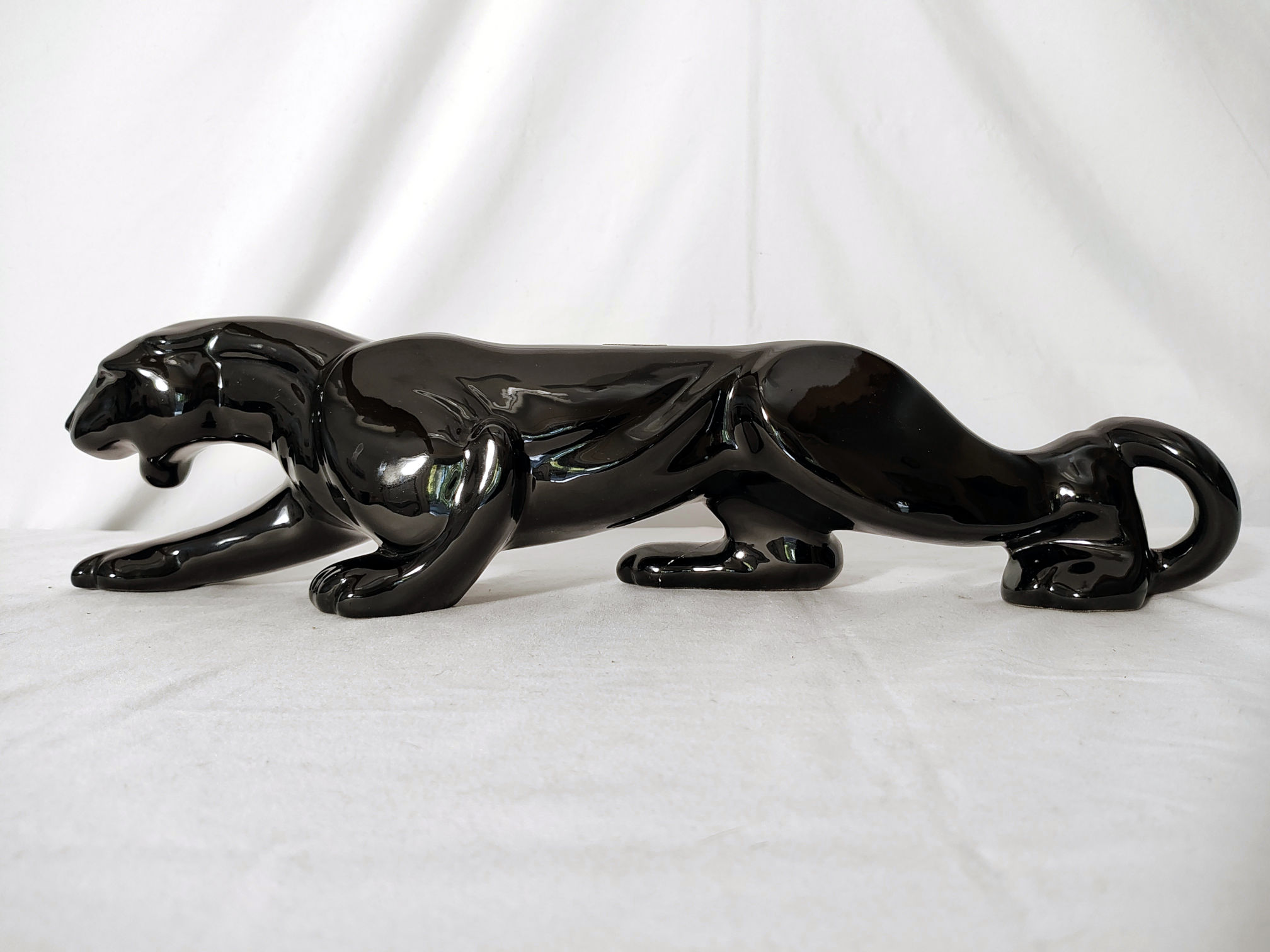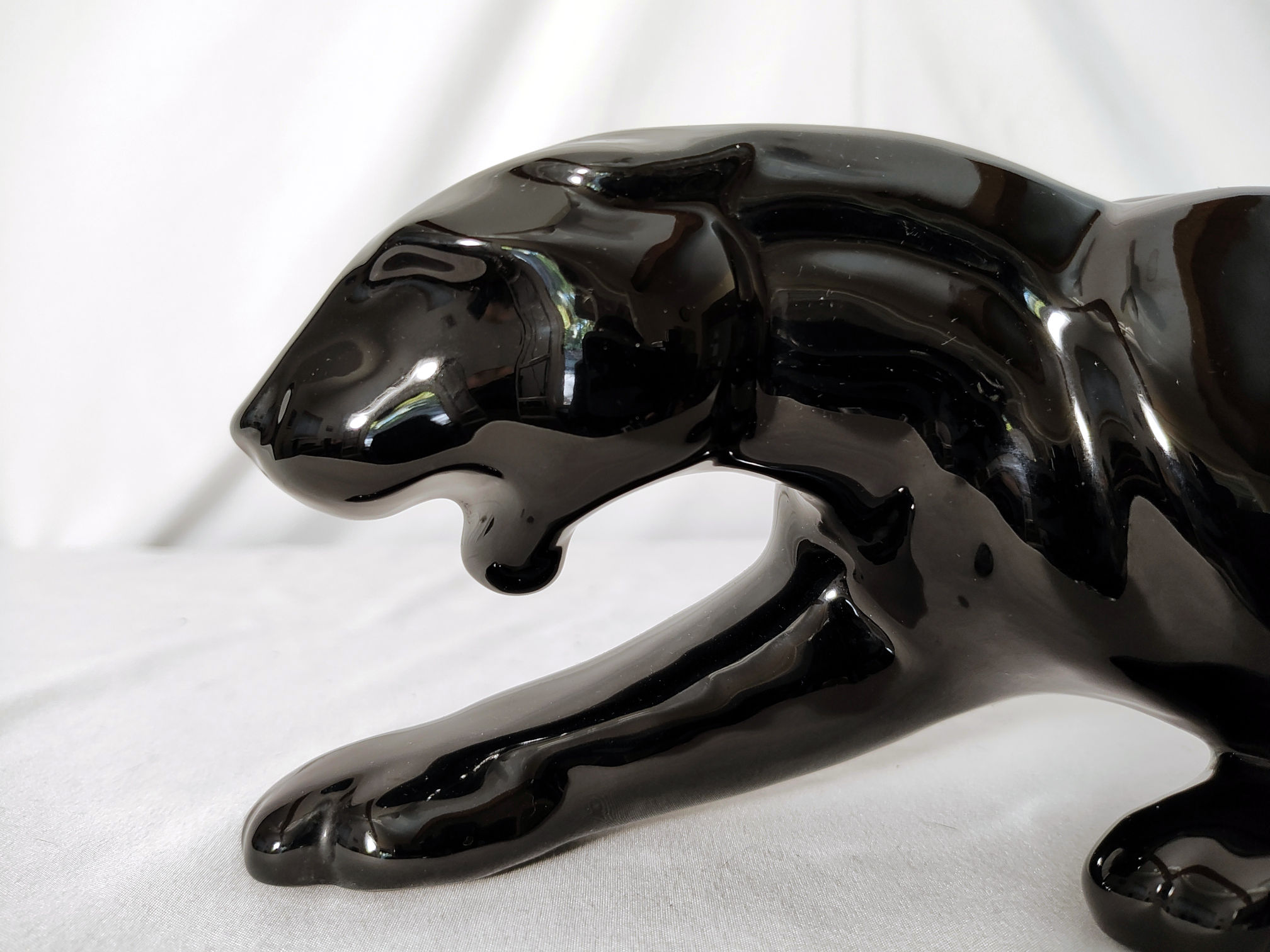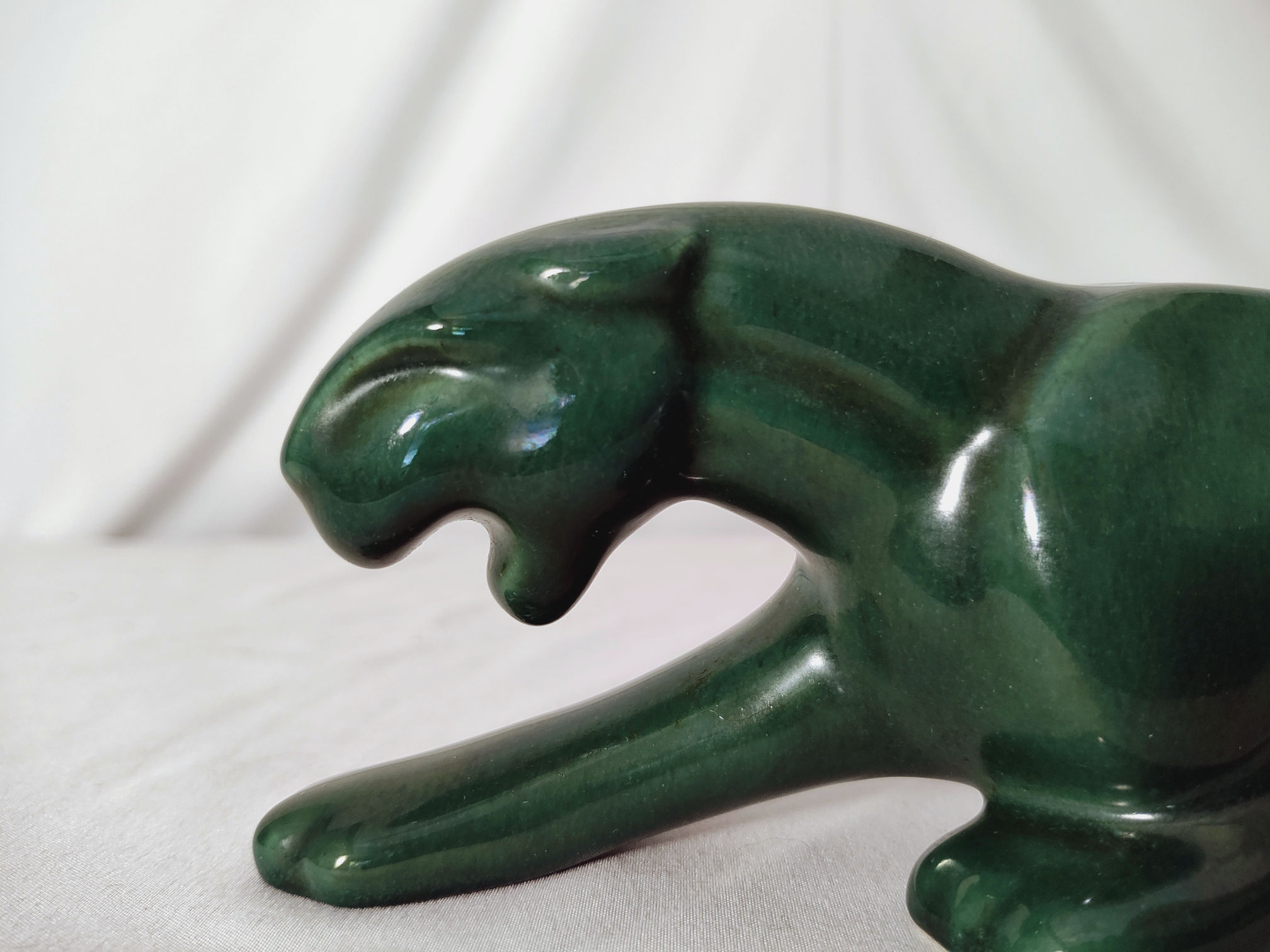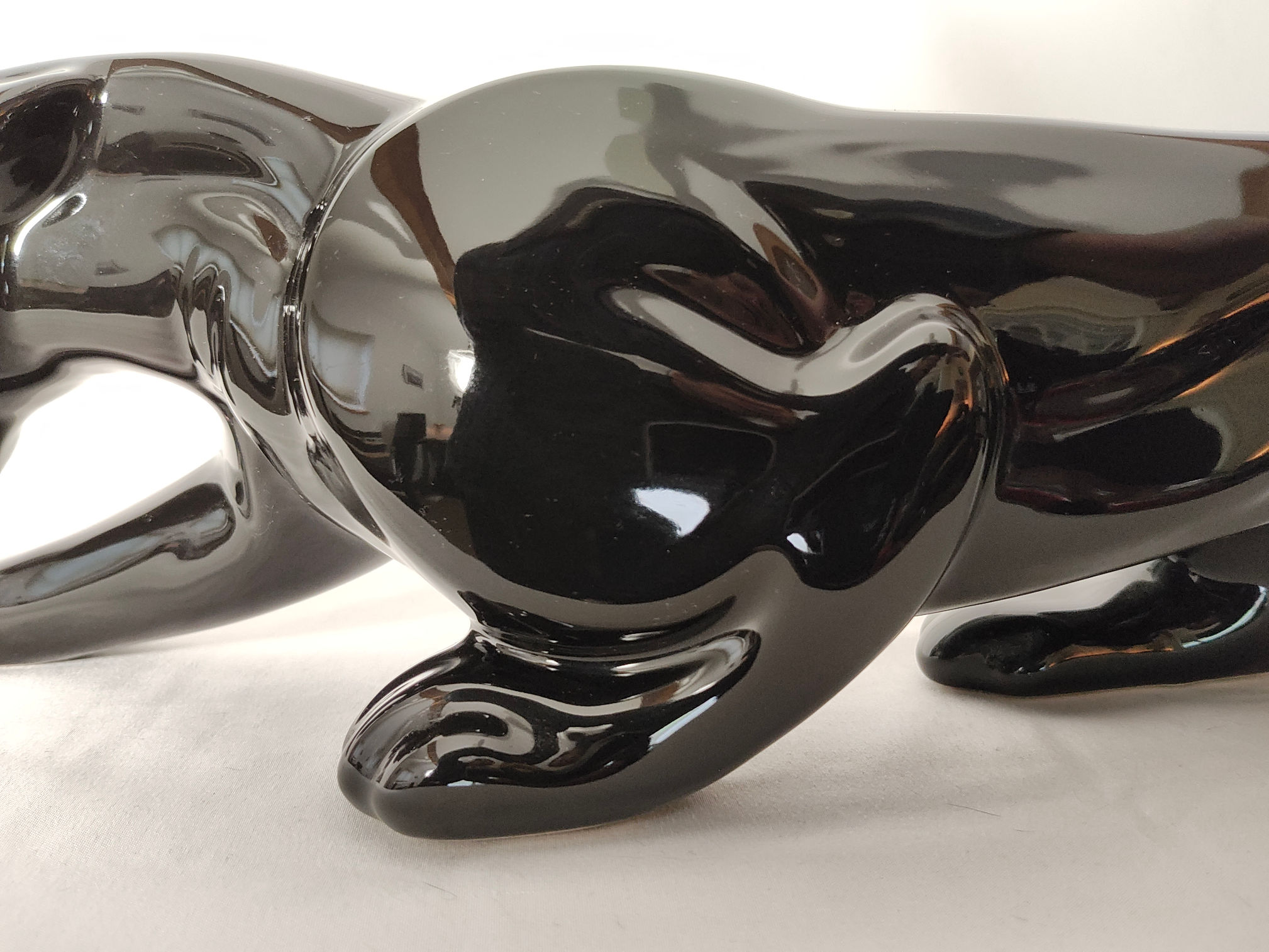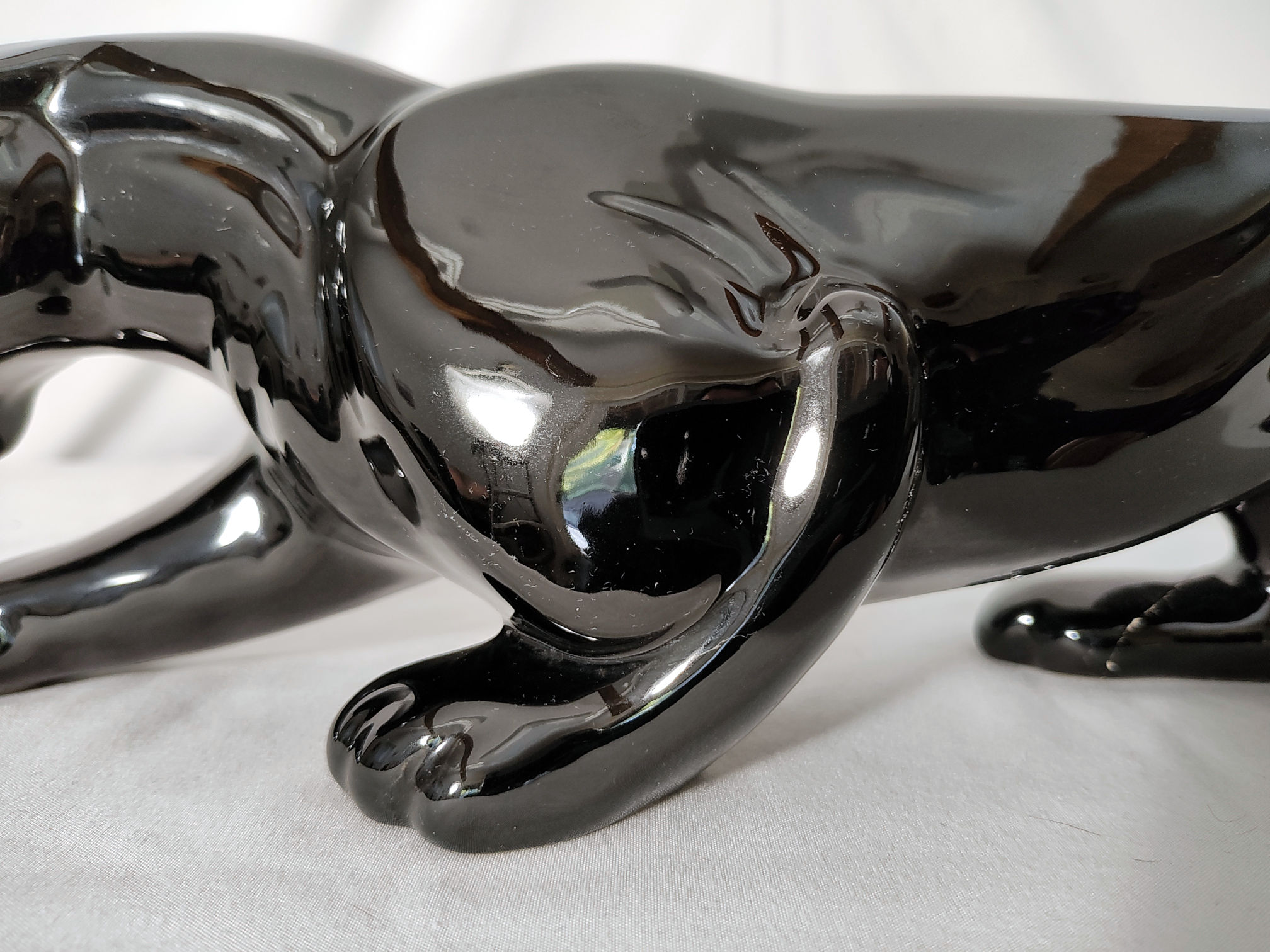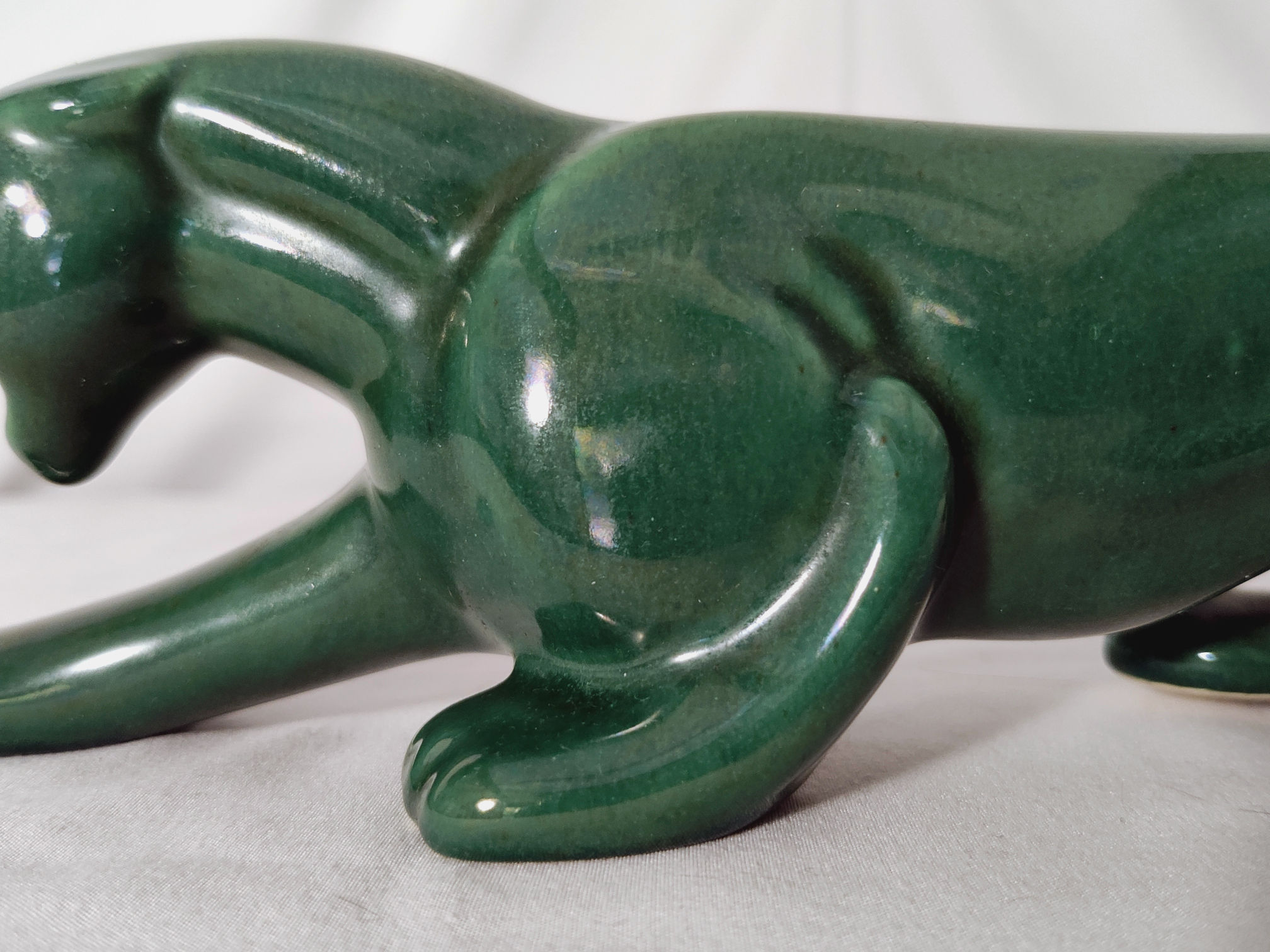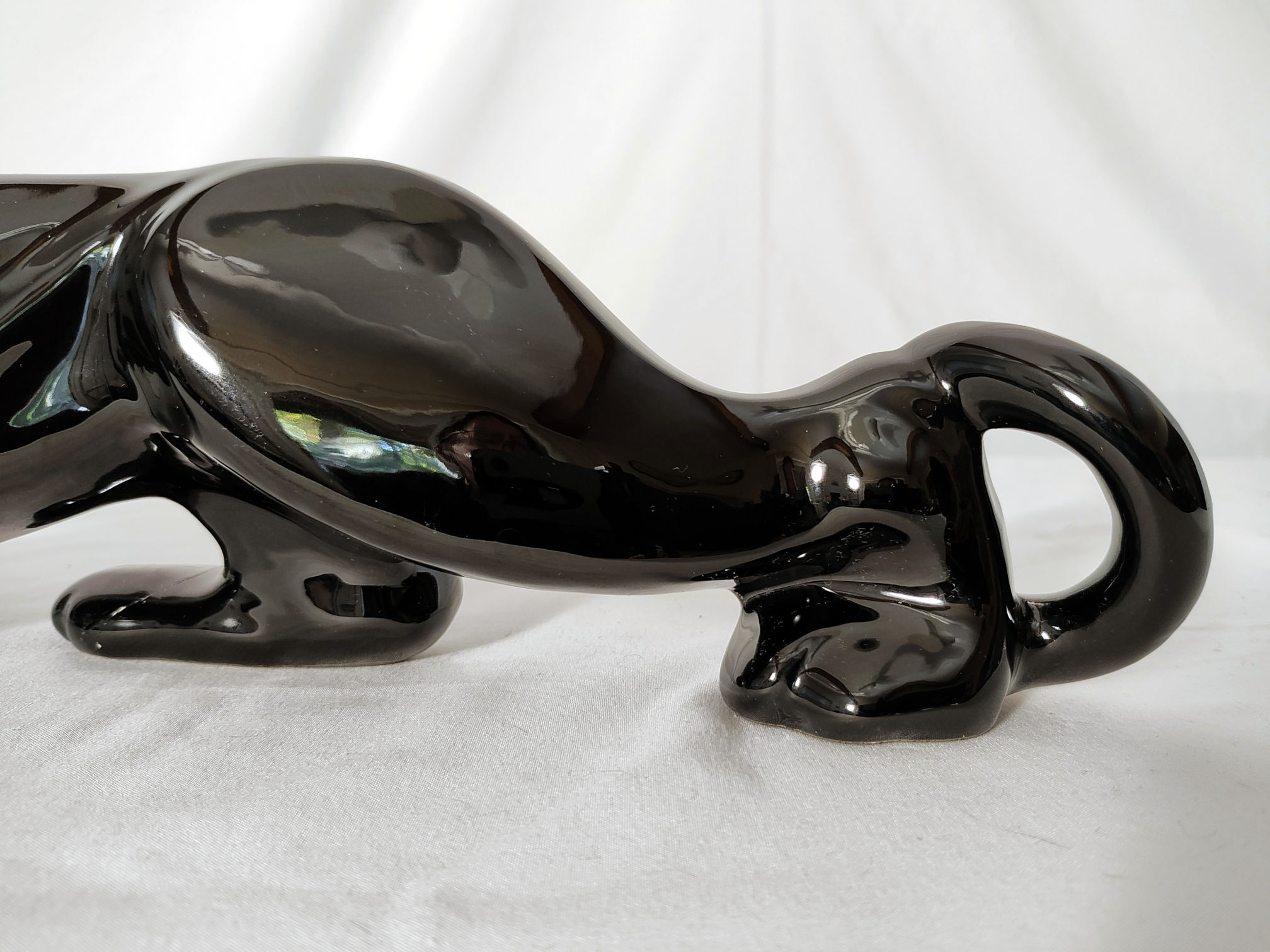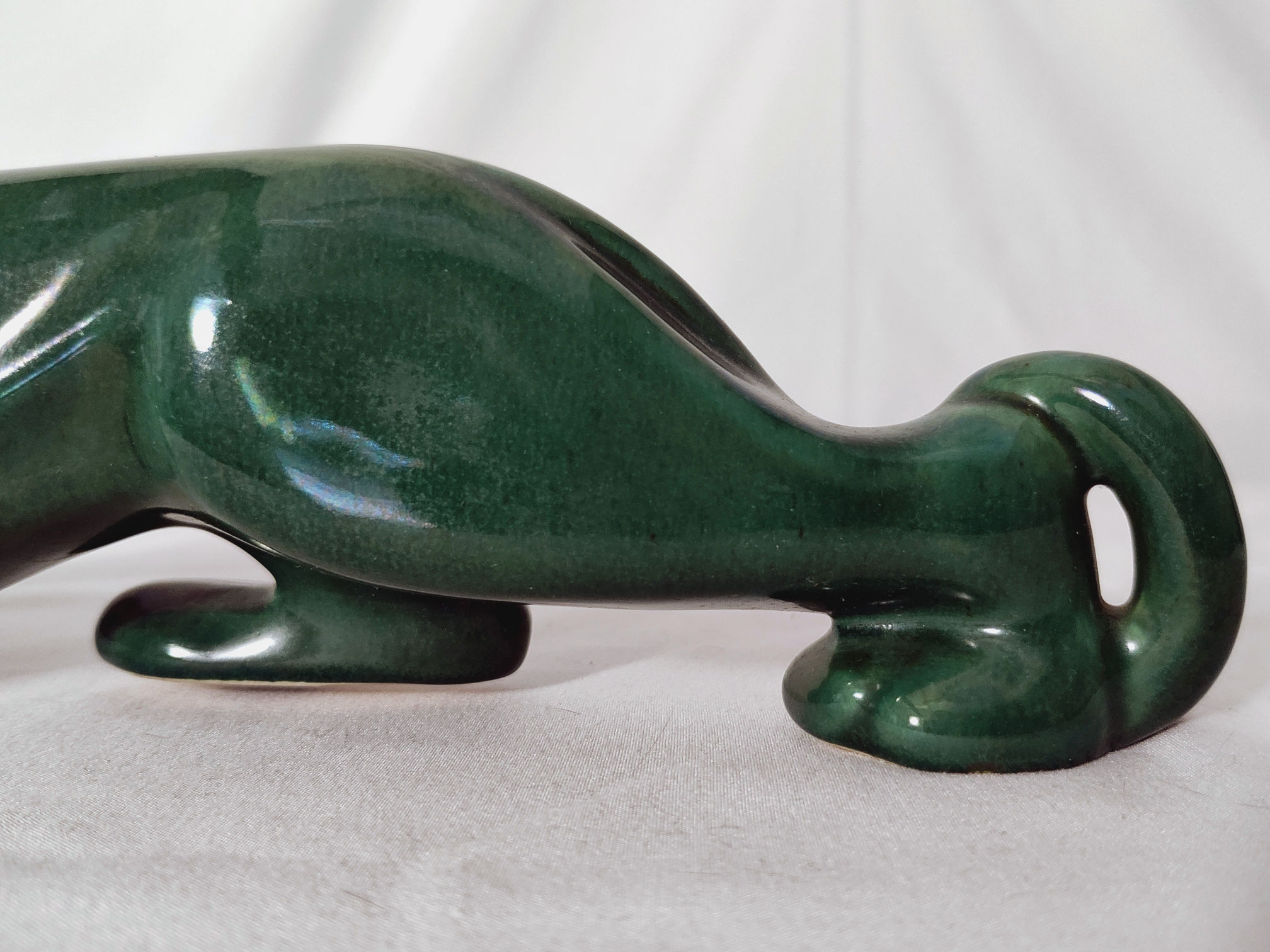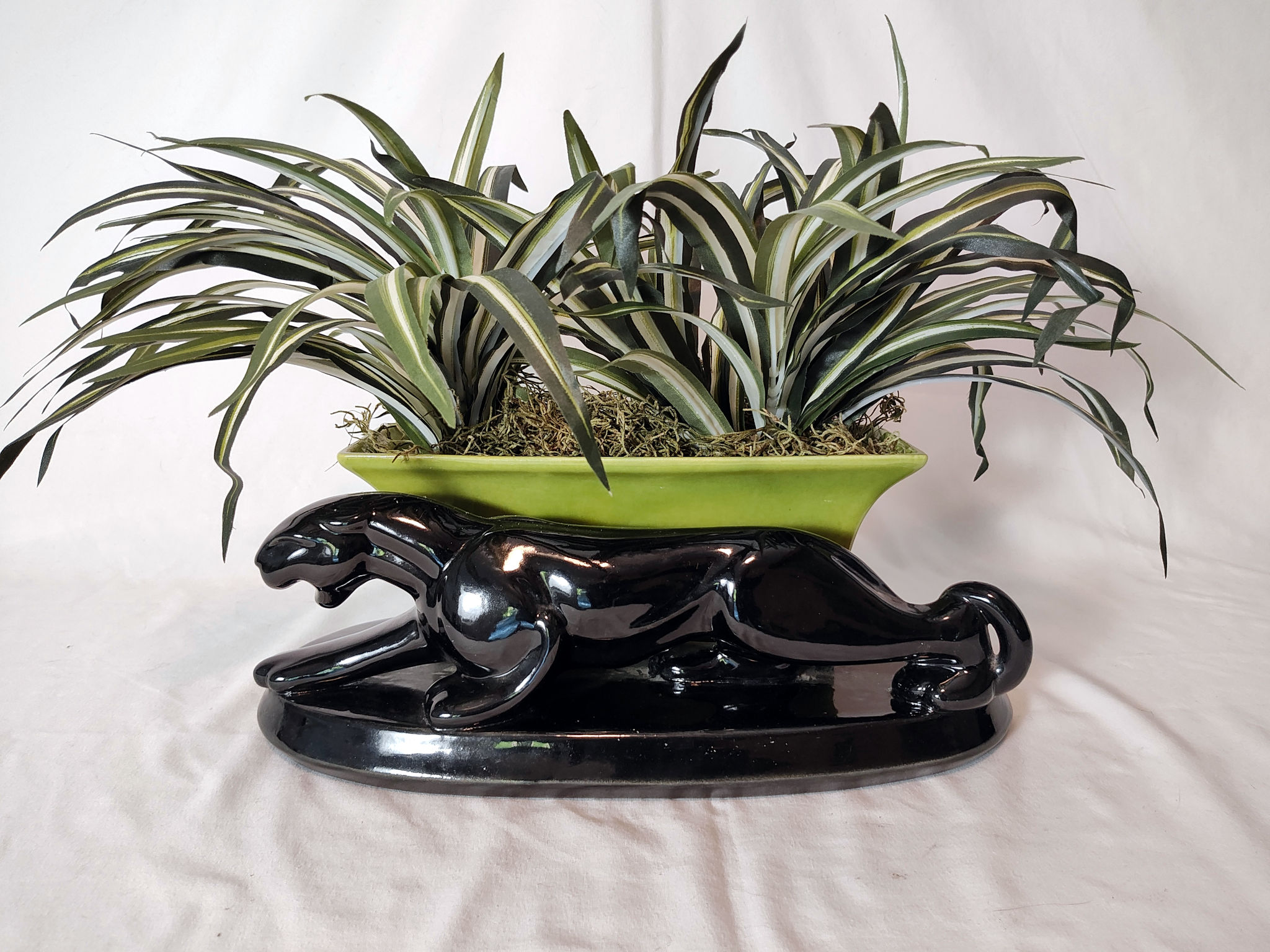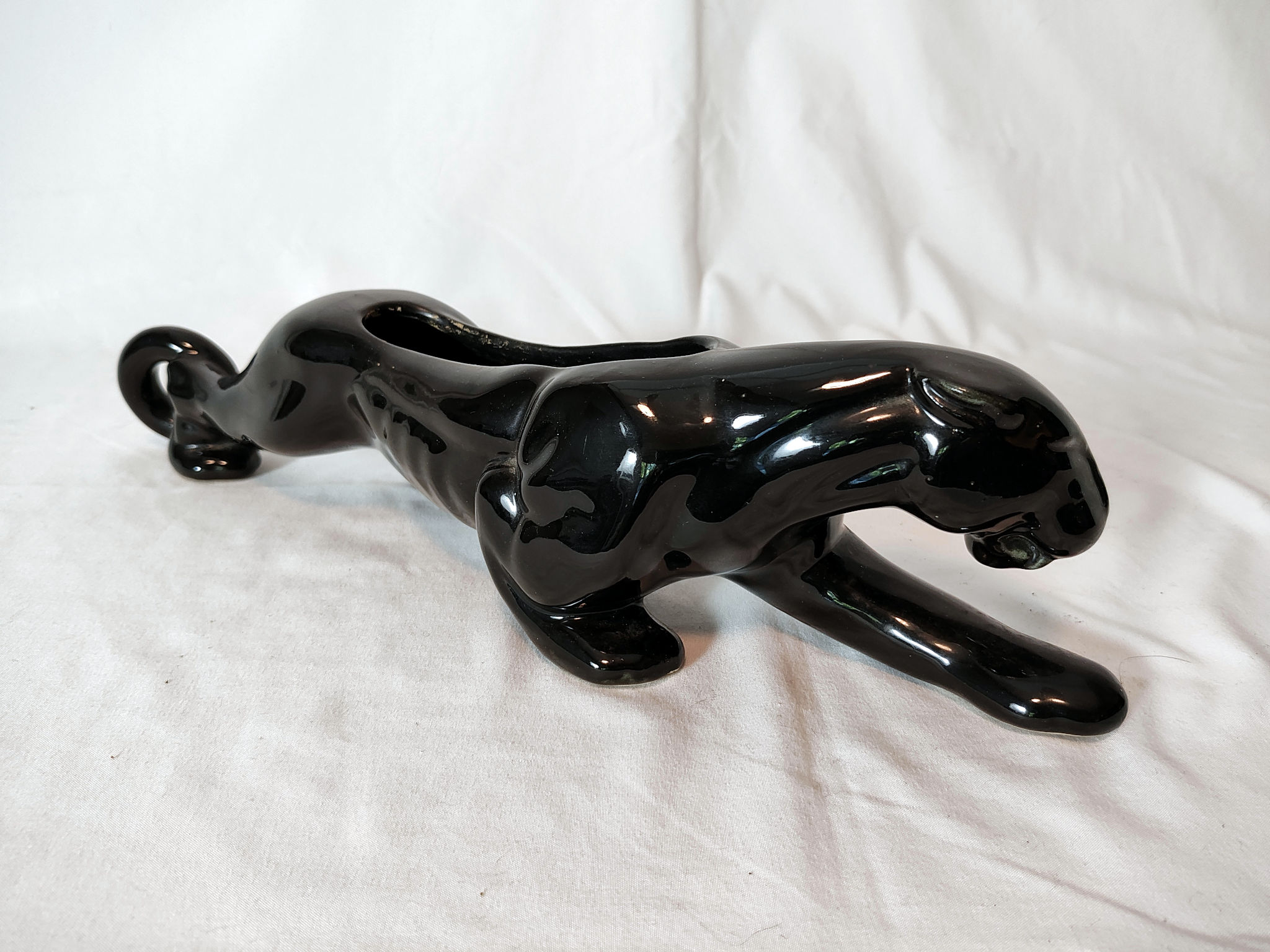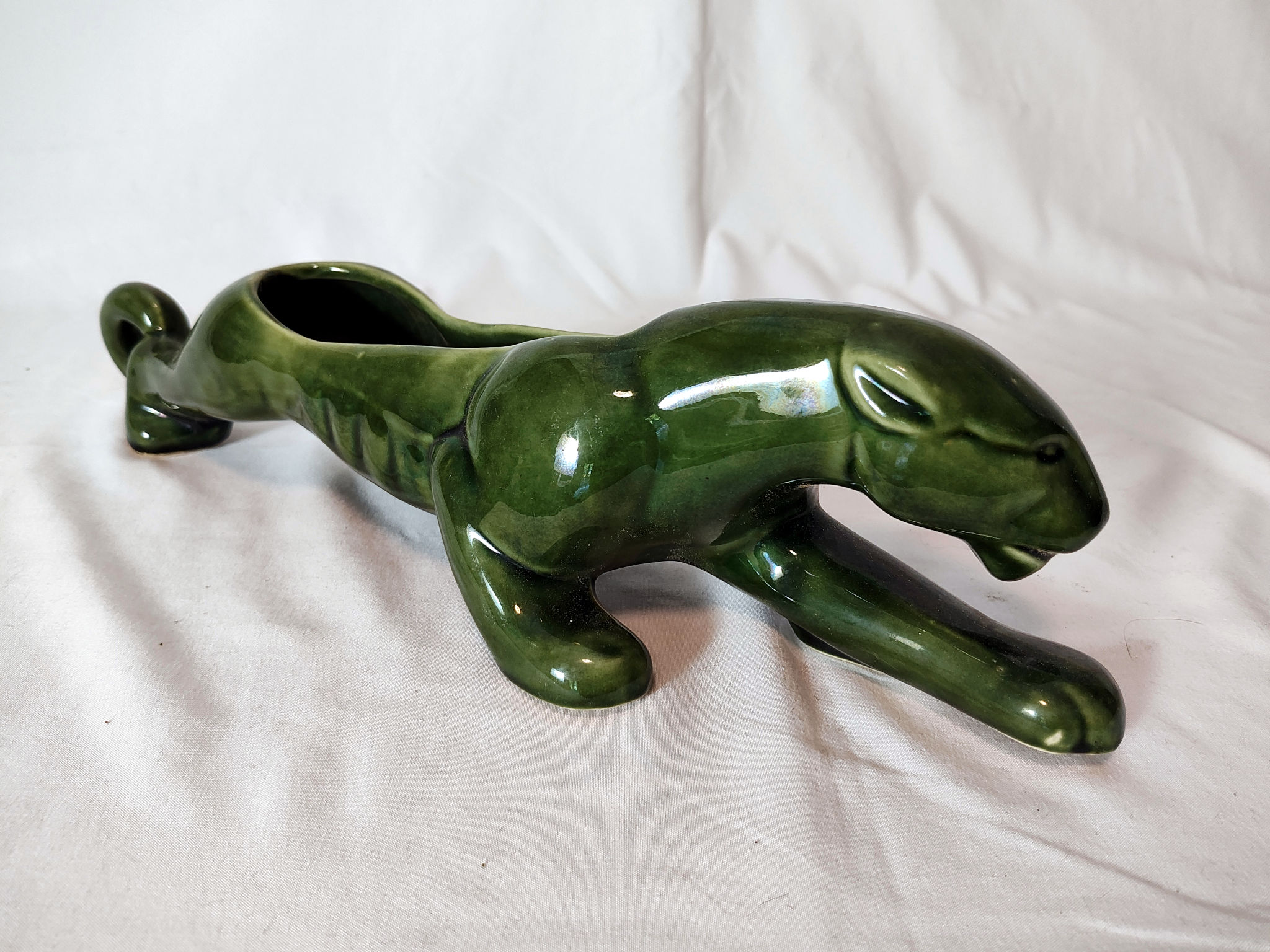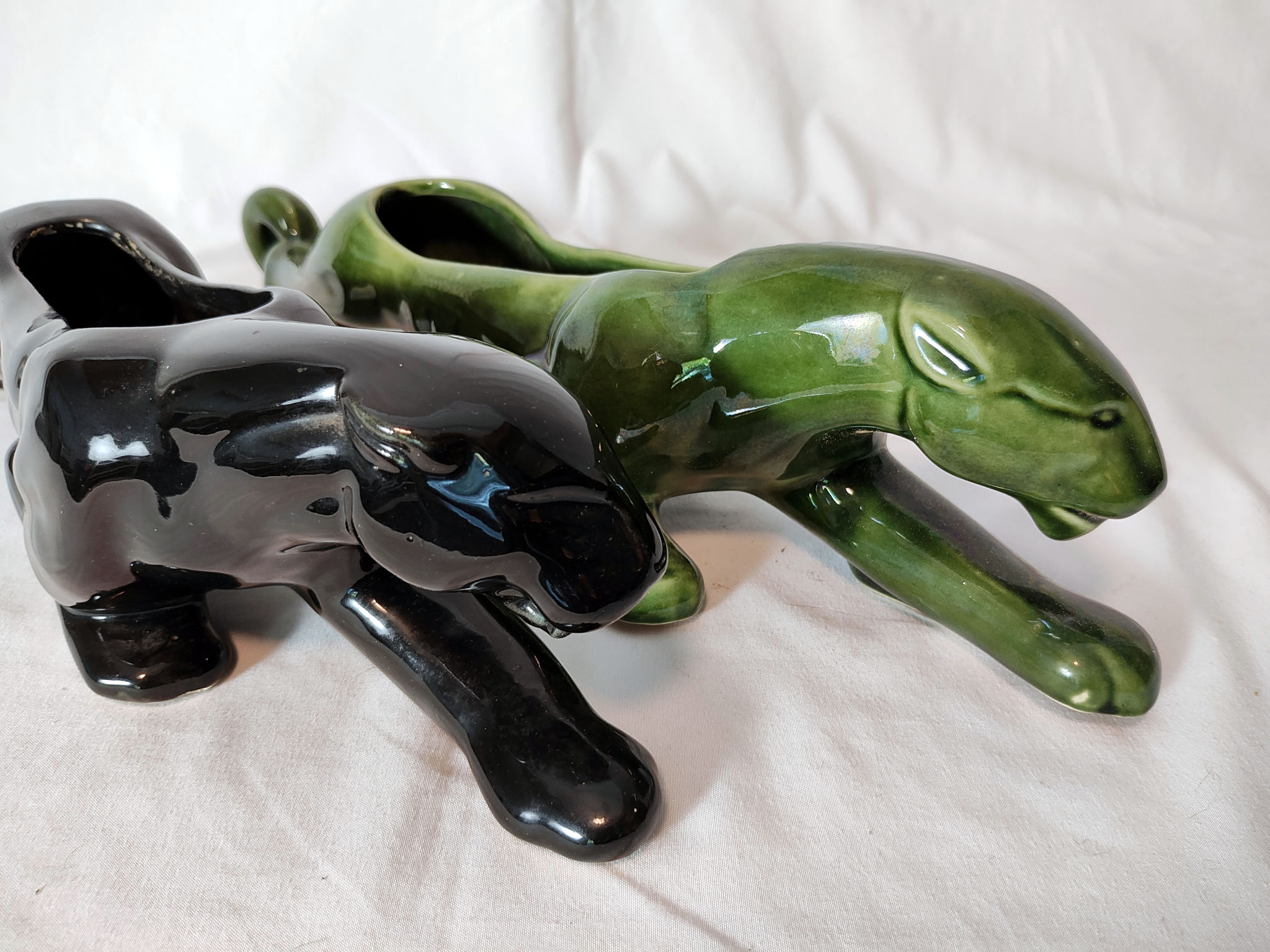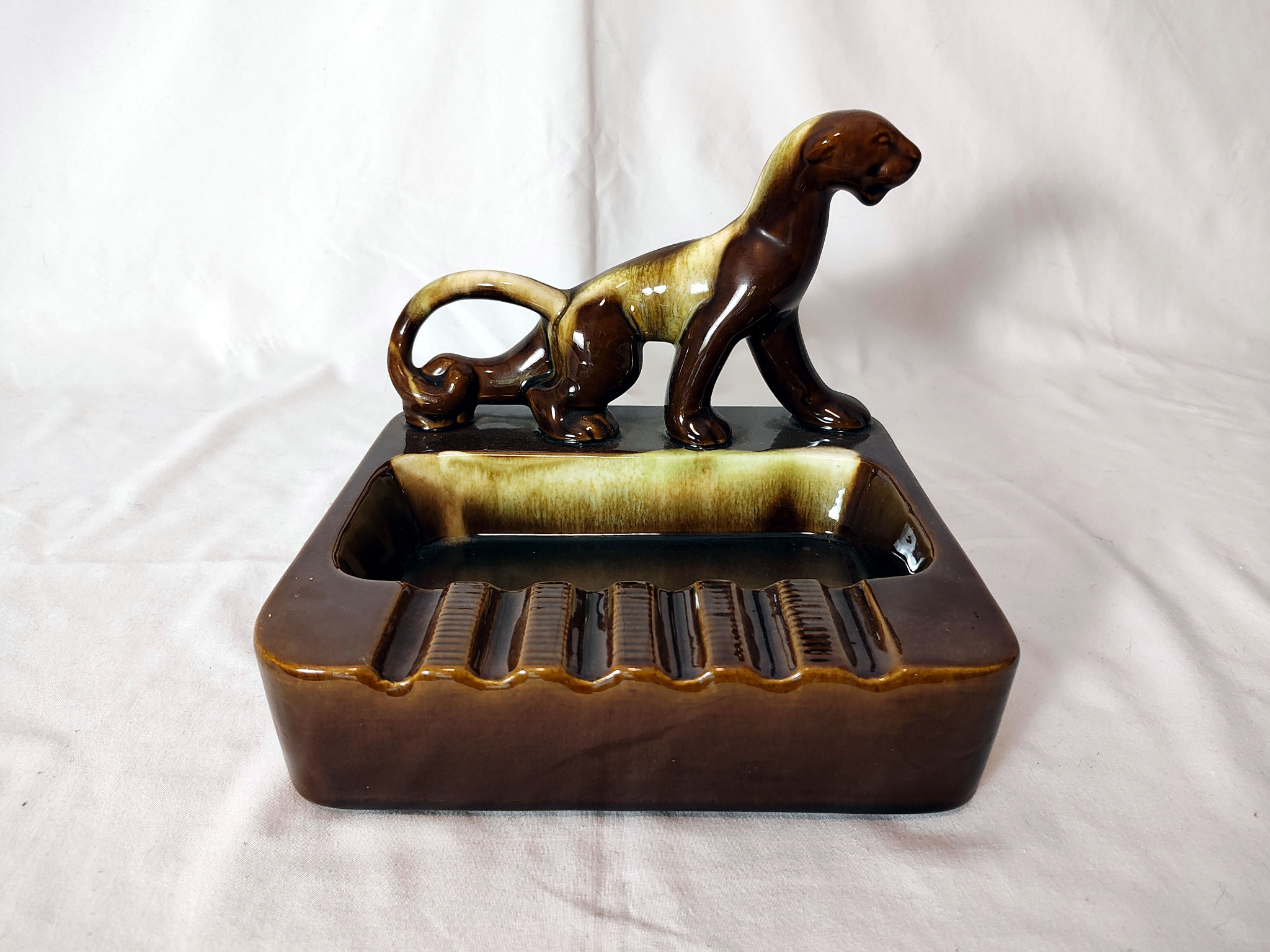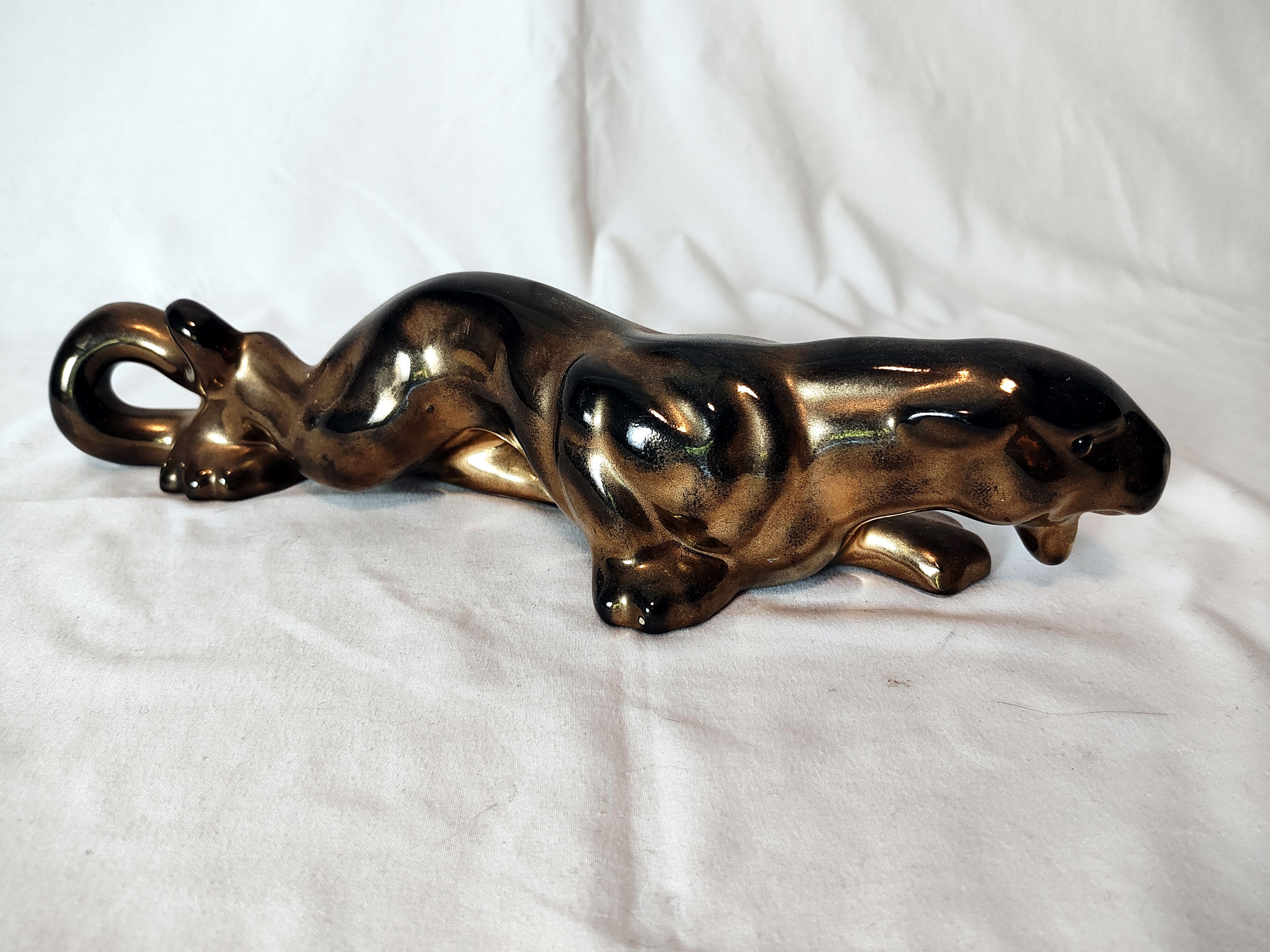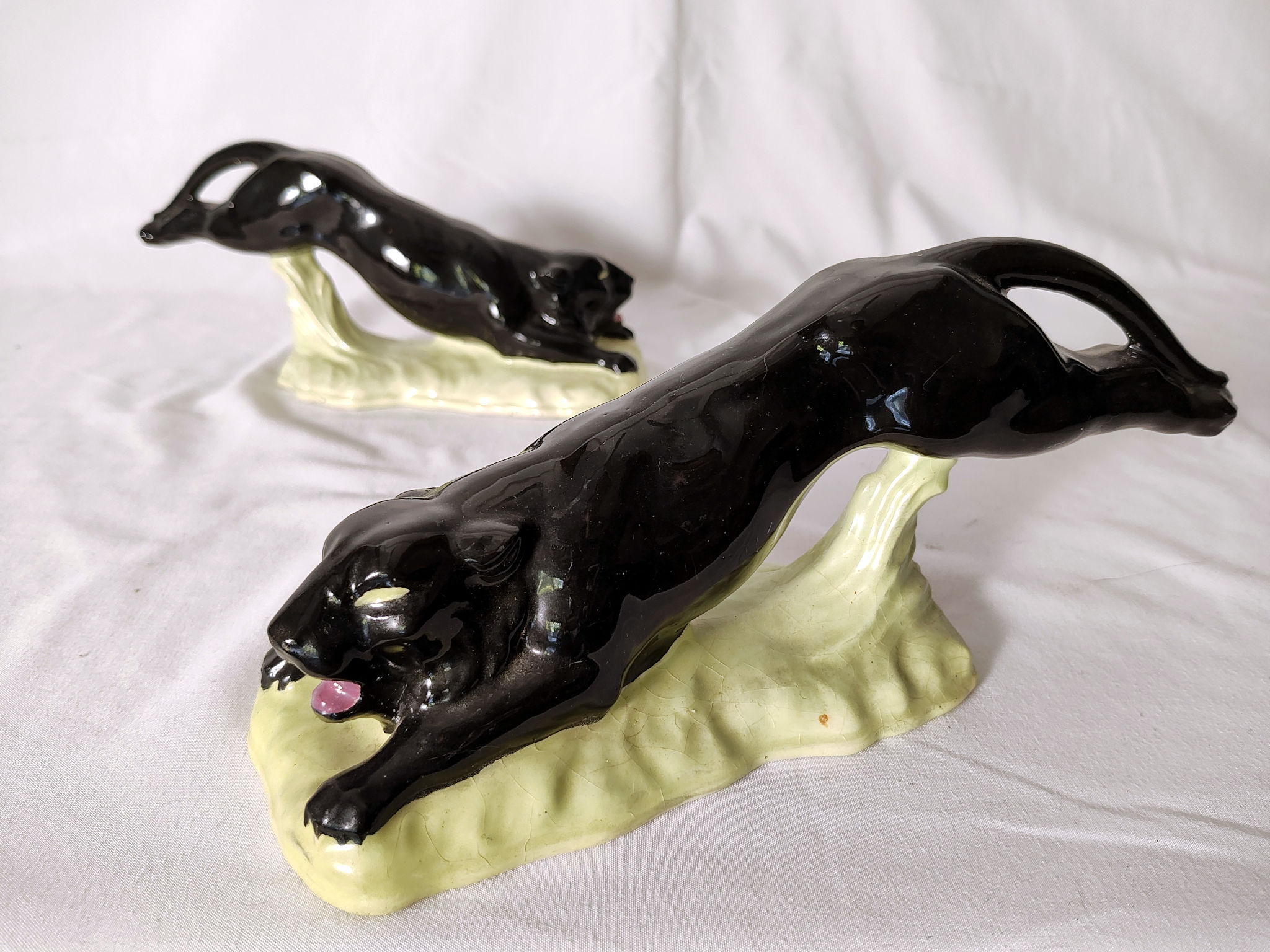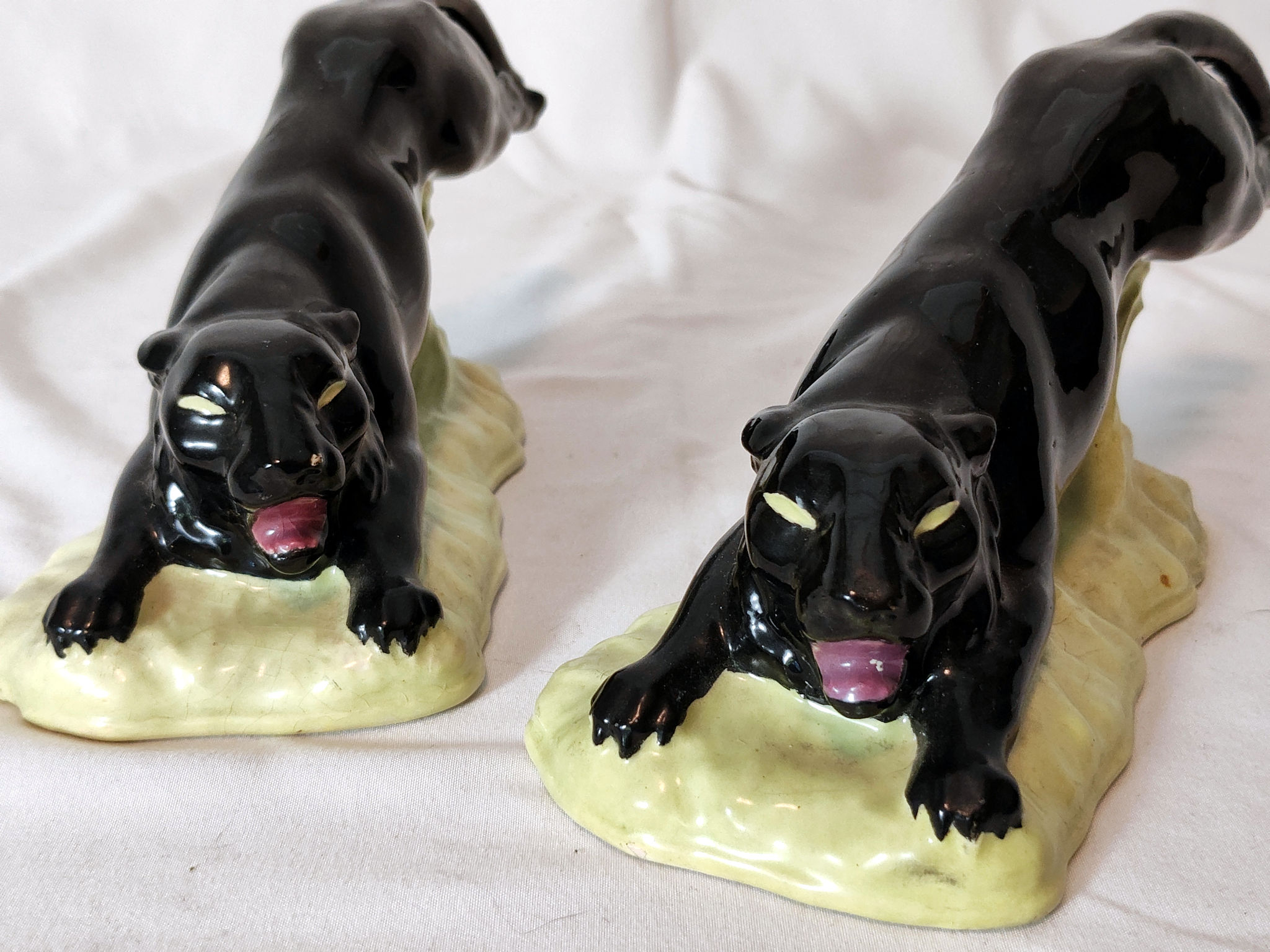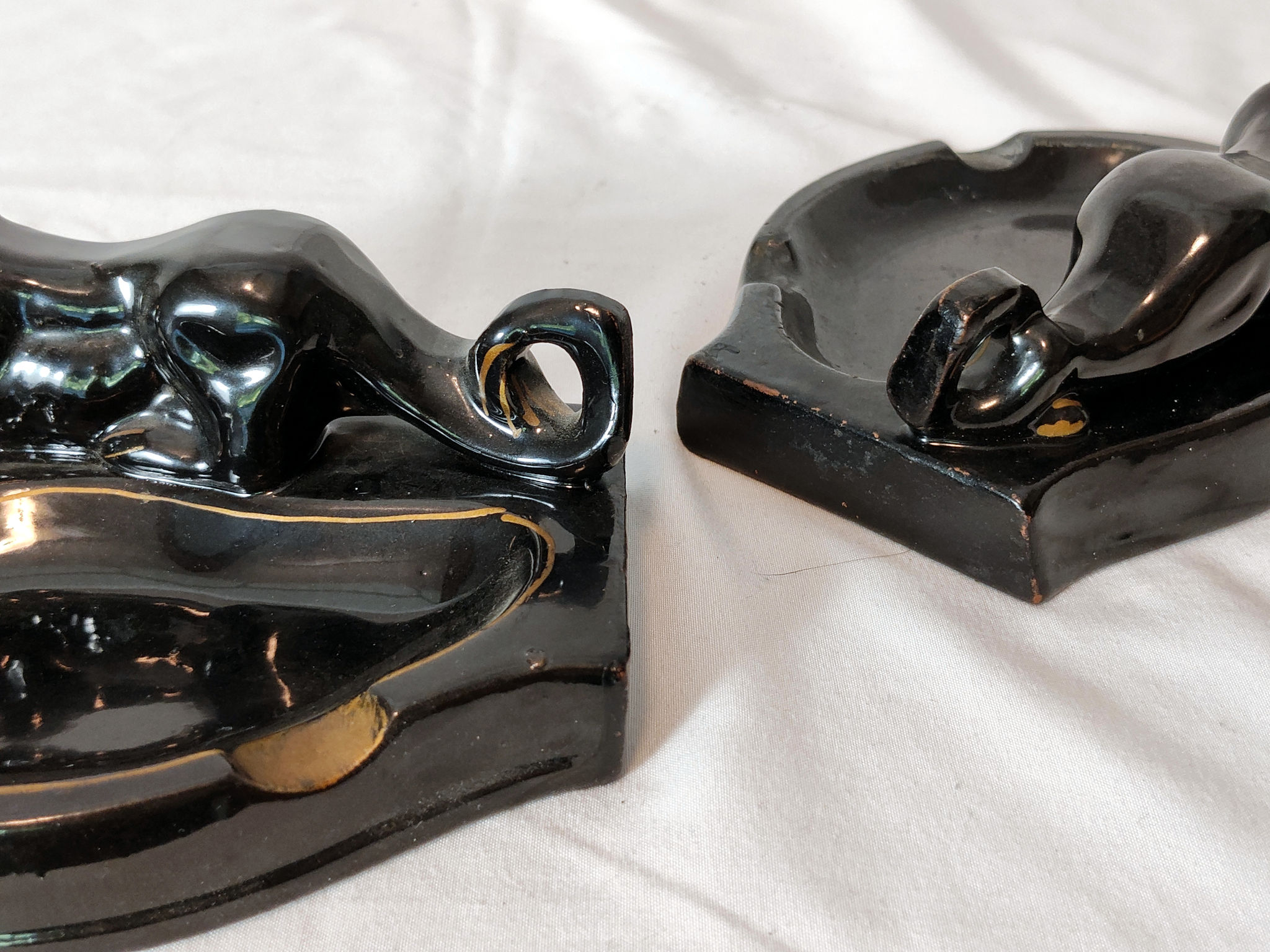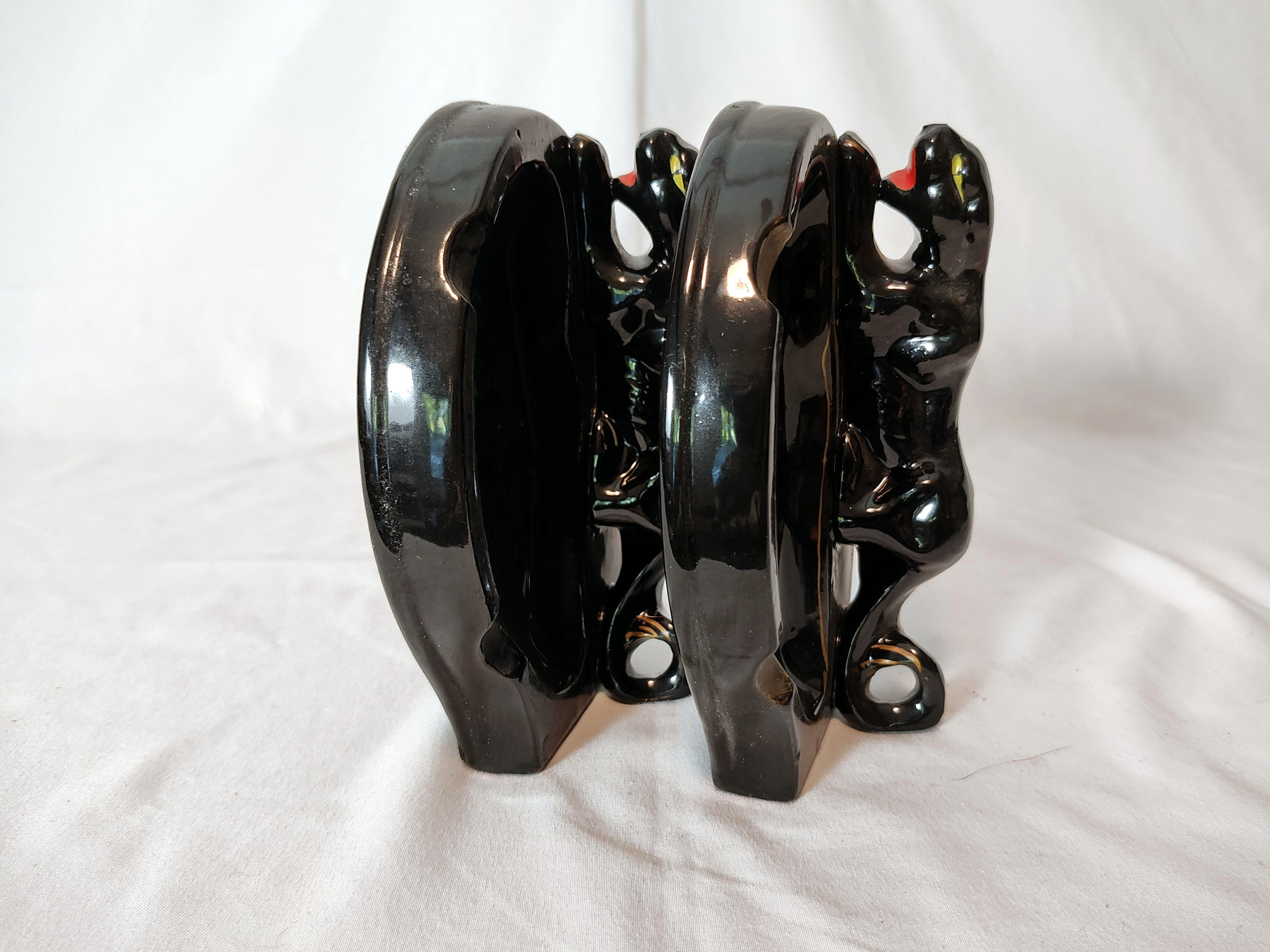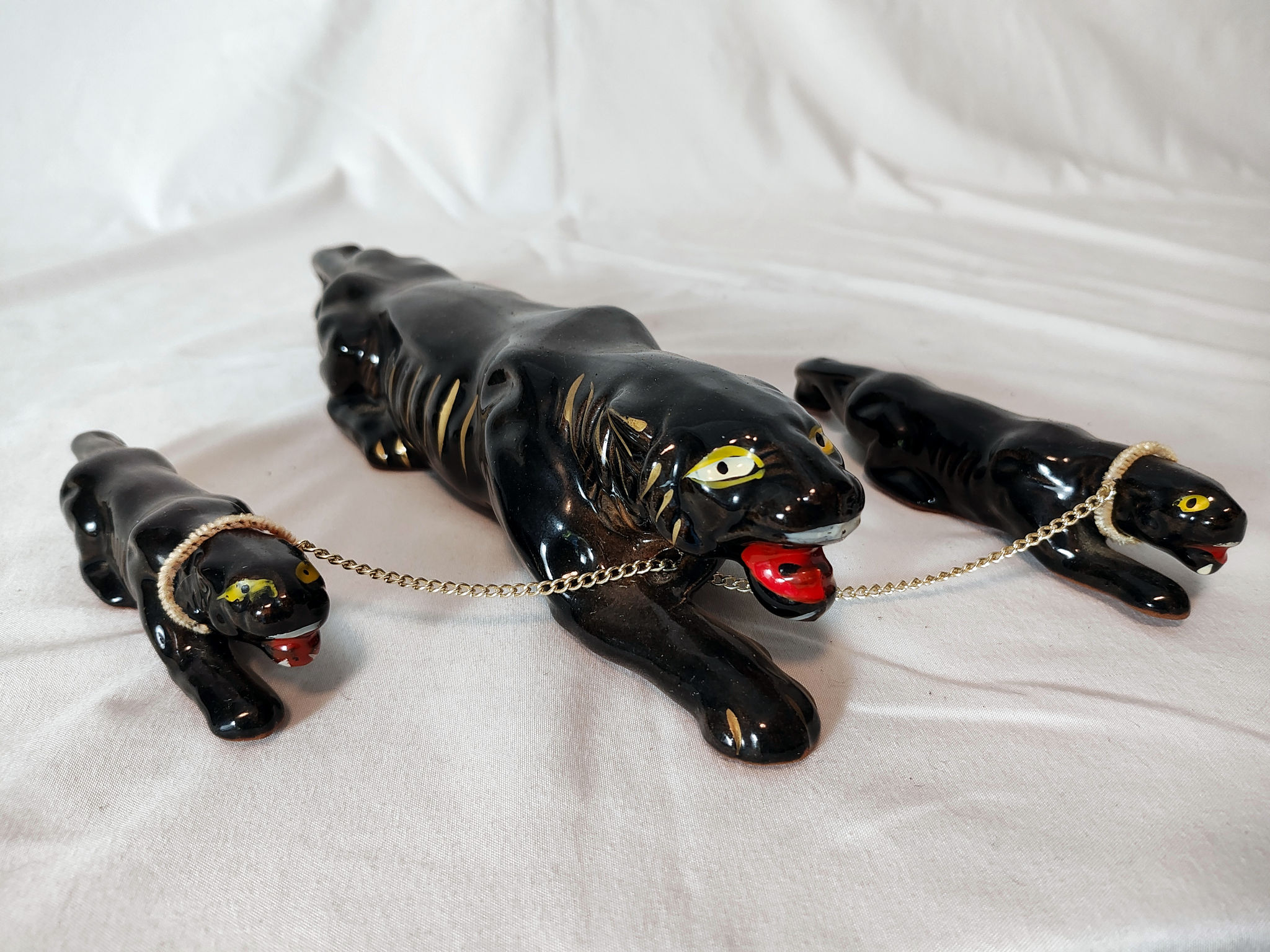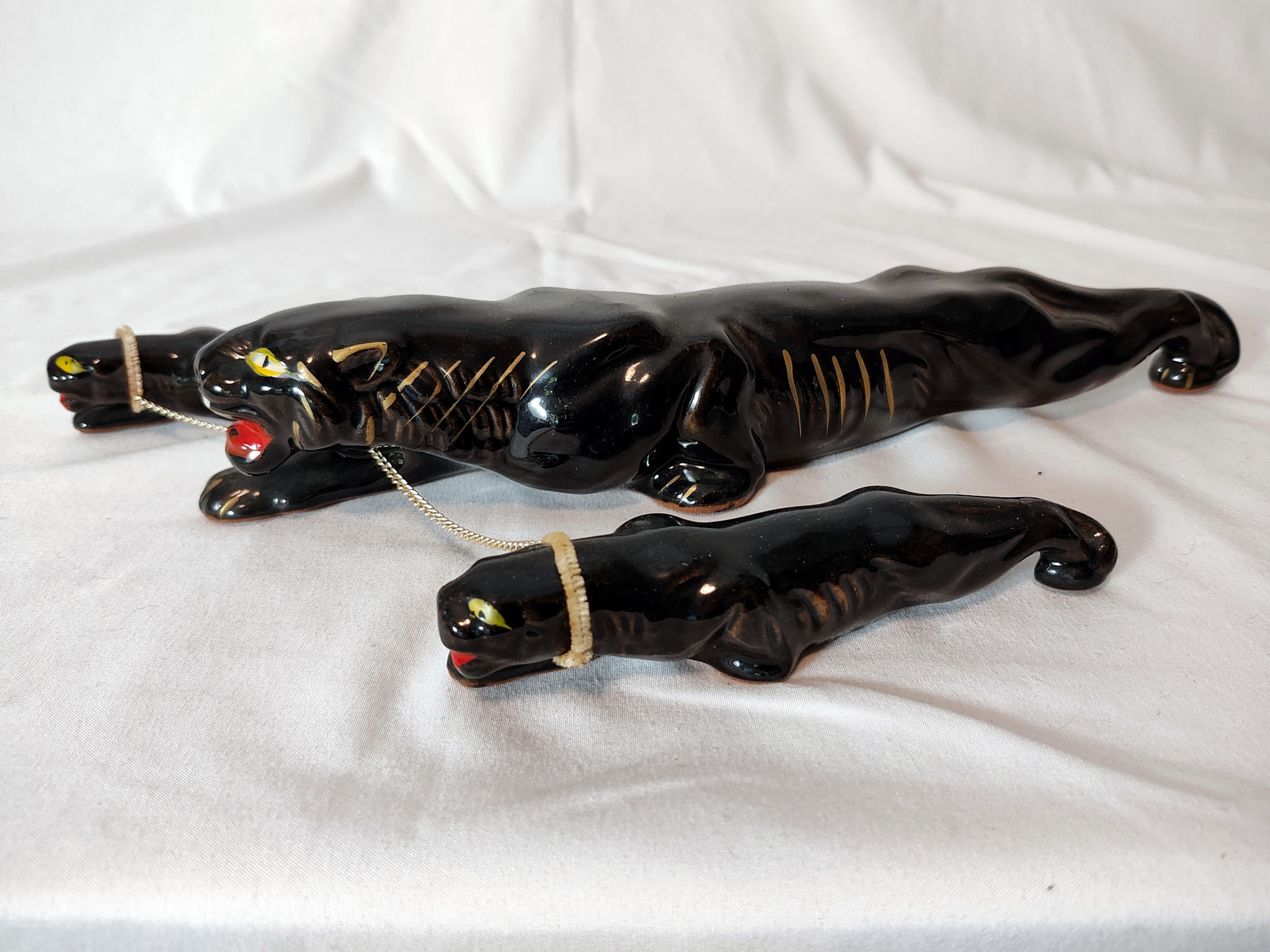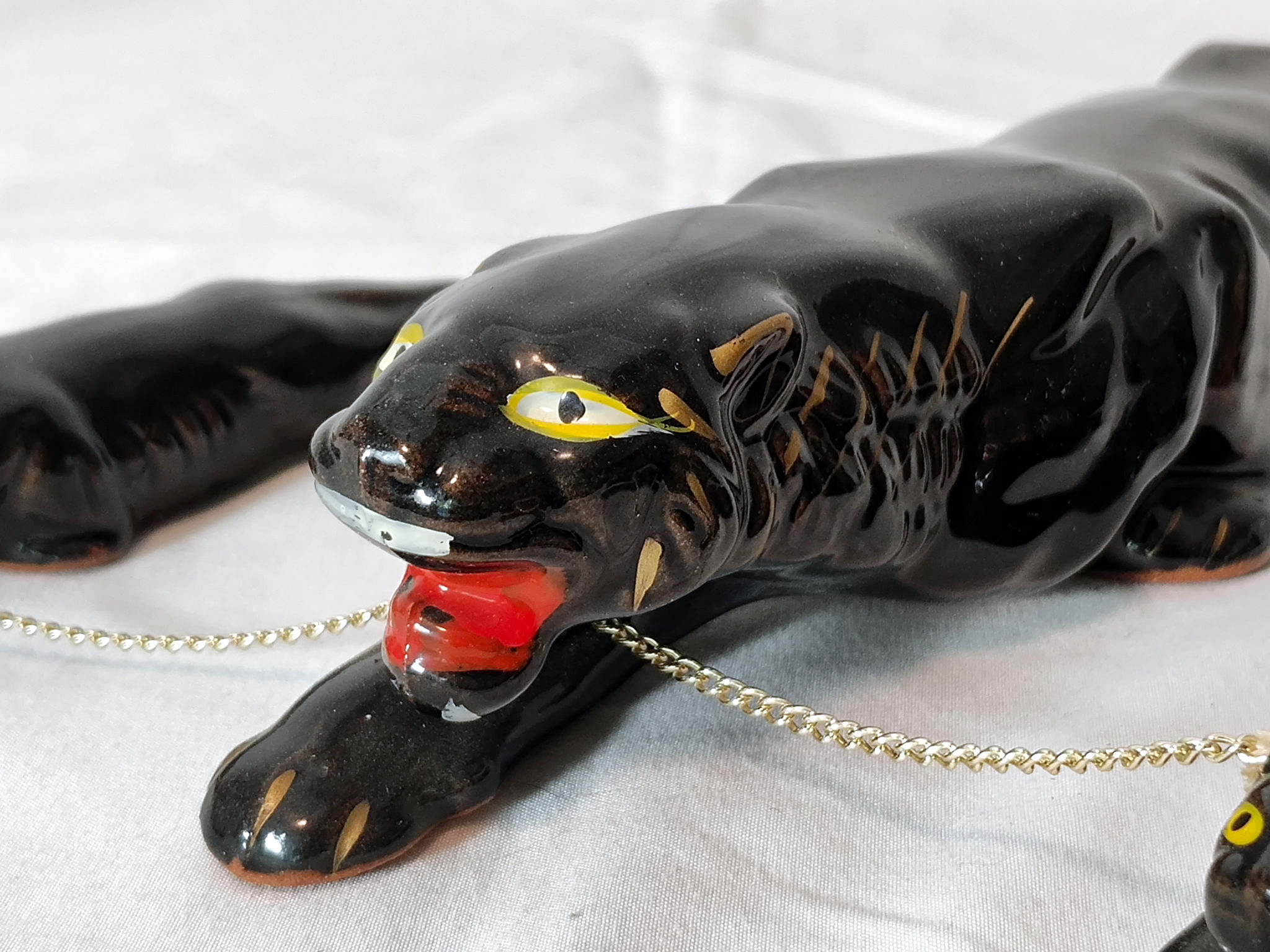Non-Lamp Panthers

These panthers are purely decorative and do not otherwise perform a function. In the course of collecting TV lamps, I have amassed a small collection, mostly from wonderful friends who occasionally bring me panthers from thrift stores or yard sales.
The Royal Haeger Panther
This is the famous Royal Haeger Panther designed by Royal Arden Hickman, and first produced in 1941. The 1950's version is the panther design from which all stalking panther TV lamps were derived - an archetype of sorts (though, Alexander Phimister Proctor's Stalking Panther may be the real archetype). These panthers were purely decorative figurines (that were later added to lamps and planters) and came in three sizes. The large one, 24" long, was the design most copied by others to make TV lamps. The medium one is 18" and looks much like the large one, but with reduced detail due to its smaller scale. The 12" panther was the smallest in the family, and the detail, particularly the foreleg, is simplified into graceful curves consitent with the time in which it was designed.
Position
Most panther lamps (by Haeger and others) face left and have the right paw extended. I believe it was intended that the crouched side should face the viewer as this better represents the power, precision, and motion to which the panther is symbolized. This panther looks purposeful, like it's about to do something. Facing right, the panther seems guarded and still.
Looking at all three, there are diffrences between them, in terms of proportions and features. The most noteable differences are that, as the size is reduced, the torso becomes shorter and thicker, the stance slightly taller, and the head positioned a little higher. Here are some other differences:
Neck and HeadThe large panther's head is quite different than the stylized ones of the medium and small panther's; it is more organic, free-form and minimal. The small and medium figurines have very deco-moderne lines and appear almost aerodynamic. All three have flattened ears and necks with gentle curved lines, although the large panther's neck is slightly lower and less curved. The large panther's head has been copied on several TV lamps. Foreleg
The large panther's foreleg is curved and its elbow ends in at a point with two intersecting lines, one of which helps form a semicircle for the shoulder and brisket - an interesting combination of lines that cause me to wonder if Royal Hickman took any influence from the work of Wassily Kandinsky. The medium panther's foreleg is similar to it's larger sibling, though with reduced detail and somewhat changed angles. The small panther's forearm is prominent, and simplified into a smooth, graceful curve. This particular art-deco/moderne stylization is seen only in the small panthers, including the panther planter and TV Panther. Hind Leg
The hind leg is extended, further implying motion and purpose. The small and medium Haeger panther's leg appears as a flattened drumstick that is featureless and smooth. The large panther figurine has three very slight ripples on the thigh - I think this was intentional to possibly strengthen it to prevent it from caving in during drying.
Very early large panthers had a long "Dragging Tail" that was easily broken. In 1950, the tail was looped around and connected to the panther's heel to reduce the chance of breakage. The later versions from the 1970's up connected the tail to the top of the panther's heel as the large one pictured above.
The Iconic Royal Haeger Panther document by John Magon contains many more interesting details about this iconic design.
Royal Haeger Panther Planter
This is the same panther and base as the 6051 TV Panther. There are no holes in the base for fixture hardware or a shade, just a rectangular planter in their place.
McCoy Potteries Panther Planter
One of these is different than the others. Note the green one has similar features to the other two, but the head and neck are less defined and more rounded, and the head points more forward instead of to the left. The crouched foreleg is also different in direct comparison. I do not know which one is...the real McCoy.
Phil-Mar Panther Ashtray
It seems that Phil-Mar had an easily recognized glaze style!
Pshenychnaya Vodka Panther Decanter
This was a housewarming gift from a long-time friend. Whatever was in here dried up years ago :-)
Slinky Panther (nickname)
The swooping, waving lines of this panther are highlighted by the erosion of the gold finish. I like this burnished look, but I do wonder what it looked like when it was new.
Leaping Panthers
These were a gift from an associate given during one of our late summer parties in the mid aughts. These are identical but have different signatures. I cannot help but to speculate that these were made, not in a factory, but by students in a school/studio environment.
Redware Panthers
This is called redware because of the reddish clay used to make the figurines.
These two ashtrays were given to me by a friend; one of which I use daily (ashtray, not friend). For many years I speculated on where they might have came from and why they were shaped with one side squared off and painted instead of glazed. I thought that they may had been a part of something larger - perhaps built into a piece of furniture for a restaurant or hotel lobby. One day, I figured it out: The reason for the squared off tail was so that it could stand vertically! With the panther on its end, multiple ashtrays can be fired in the same footprint. Clever!
Redware panthers are very common. These were trinkets and souvenirs that were made in Japan in high volumes. Most panthers are solo, but I have seen them connected in pairs. This 3-gang panther is, however, very uncommon due to the single chain that connects all three. These belonged to my old band mate's grandparents who got them in the early 1950's.I wonder if this Japanese panther design is a derivative of the Royal Hickman design, or if it is a culturally traditional/common design or decoration from ancient times? Which came first? Did one inform the design of the other?
